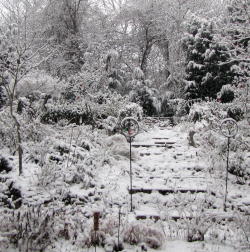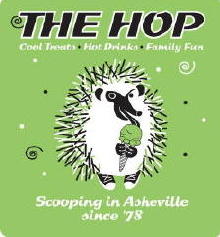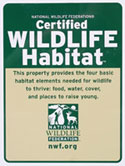
Since it is once again Wildflower Wednesday, the sharing of wildflowers and natives hosted by my dear friend Gail of Clay and Limestone, it has been decided to showcase a couple of lowly weeds. Weeds to some, beautiful native wildflowers to some, invasive horrors to some, but these are plants that I admire and allow some to grow to their full potential here in the Fairegarden. The first is Acalypha virginica var. rhomboidea, shown above rooming nicely with lavender. There is some dispute over the naming, but that is best left to others who seem to have too much time on their hands.

Giving credit where it is due, the brilliant Les of A Tidewater Gardener supplied the identification after a photo was shared on facebook. Sometimes a plant is so poorly thought of, it doesn’t even rate a place in my Wildflowers of Tennessee, the Ohio Valley and the Southern Appalachians book, even though it is a native to our area.

Nondescript in the green phase, it is the fall coloration that wins it garden privileges here. The common names of Virgina threeseed mercury, Virginia copperleaf, mercuryweed, threeseeded mercury and wax balls relate to the triple lobes of the seedpod and the turning of the leaf and calyx to a purple/copper color, shining like a red beacon when backlit. It is an annual, growing to about one or two feet tall in my garden. It appears at the edges of garden beds in partial to full sun and most are allowed to grow on and mature to keep the free plants coming year after year.

In fall, it is a standout with painterly warm shades that shine like amber garden jewelry in the lower light. What this plant needs is better PR, a nifty name, possibly including something good to eat, patented, of course, and the big push at garden shows and in magazines. How about Copper Caramel? Sounds like a winner. The Mourning Dove, Swamp Sparrow, and possibly other birds eat the seeds, while rabbits and White-Tailed Deer, among others browse on the foliage, primarily during the summer and fall. It lacks the toxic white latex that is a typical characteristic of other species in the Spurge family (Euphorbiaceae).

Moving on to the next weed/wildflower that gets no respect, please give it up for dog fennel, Eupatorium capillofolium.

This is a tall, ferny plant that is rare in our zone 7a area. It grows more rampantly in warmer climates. It was particularly beautiful where we used to live in Texas, combining well with the purple berries of the native beautyberry along shady pathways. There is a downside to this wind-pollinated plant, dog fennel contains liver-damaging pyrrolizidine alkaloids, so livestock are known to eat all the turf around a stand of it. When crushed, the leaves emit a distinctive odor, not unpleasant to my smeller. The Latin name capill means hair, folium means leaf, and the foliage is quite ferny and beautiful.

Proper siting is necessary for this plant is over six feet tall without heels. Moved while still small to either side of the shed side entrance to the knot garden, a vision of stately structure with an informal vibe is conjured.

Staking was required once the flowering that weighed down the fronds occurred to allow free passage into the knot garden. There is a second, smaller fennel on the other side of the path. Perhaps next year will see the vision come to fruition.
***
I hope this inspires you to squint your perception of the weeds that grow freely in your own gardens. Used properly, they can be every bit as desirable as the expensive exotics that get all the attention and fanfare. And did I mention that they are free?
Frances









Frances, My dear, you are the champion of orphan wildflowers! I hope that more people can open their gardens, if not their hearts, to these two underappreciated pretties. I’ve tried unsuccessfully to get dog fennel to grow here, but, Virginia Copperleaf pops up in surprising spots all over the garden. xxoogail
Some say these are weeds but for me they are really beautiful! I especially like the Virginia Mercury because it grows so fast and tolerates a bit of shade.Too bad it is annual, otherwise you could use it in low maintenance landscaping.
Such a pretty color on that mercury weed. Both are neat plants in your garden. Sometimes the weedy ones are best.
Very interesting WW Faire. I have the first weedy wildflower in my garden, and I always wondered what it was. Thanks.~~Dee
BRAVO to the weed promoters, more so when they garden in the suburbs and not the countryside! One of my idols and South Africa’s most famous garden writers, Eve Palmer, was thought a little touched by her neighbours when she dug up the weeds on their pavements and planted them in her garden. She was, amongst other books, the author of a classic folk/indigenous herbal.
Oh, Frances, this post came 3 days too late! I just pulled the first plant out of the Nanoprairie as a weed. Now I know better. The dog fennel is very striking.
Oh! We just encountered that very variety of Euphorbium this past weekend on our nature walk. I enjoyed the smooth and soft branches and the weight was unexpected when I lifted a branch up. It’s wonderful that you ID’ed that for us today. I had wondered what it might be. Love to find t he pretties among the ‘weeds’. 🙂
I’ve seen the Acalypha growing all over here. Honestly I’m not a fan. The leaves have a nice color in the fall but it spreads fast. The Eupatorium looks pretty neat though.
The dog fennel is particularly nice…I like that feathery look in the garden.
Those are both unfamiliar to me but I like them!
I would never have been able to guess anyone would consider these weeds unless you’d said. Indeed, I’d like to grow Virginia Copperleaf in my garden!
Such lovelies, I can see why you encourage them in your garden, Frances. I love the color of the mercuryweed and the airy appearance of the dog fennel. I’ve found, too, that the line between weed and wildflower is often blurry.
I may even get a chance to do a Wildflower Wednesday post, usually miss them. I have both your wildflowers — though I will admit to ridding the garden of the first….though with woods on either side of me, they don’t stay gone long!
We have tons!! of Dog Fennel. Ours is starting to turn red already. Love it when the stems are dark red and the seedheads are still beige. It grows all along the street, so I enjoy it when I take the dogs for a walk.
Two really good plants – neither of which I’d ever heard of. Love the coppery fall colour & the feathery bits of the dog fennel. I’ve had luck with other Texas natives – wonder if that Eupatorium might work for me? I think it looks excellent with the B.B.
I do remember the dog fennel from yrs past. I do see it on roadsides here with wild black eyed Susan.So pretty. Nature does have some of the prettiest blooms. I do so enjoy.
When we lived in middle Tenn., south of Nashville, dog fennel appeared for the first time several years ago, in a field we were trying to develop as a native meadow. I finally got it identified (by the author of Wildflowers of Tennessee). After that first year, each year saw more and more of it. It is truly lovely. Maybe it’s moving further north with climate change?
What an interesting take on these two weeds/wildflowers! I’ve never seen either of them, not in Massachusetts where I gardened for many years, and not here in Washington. That is a very pretty shade of orange that the mercury weed turns. I love how careful reading of your blog reveals your sense of humor (“without heels”).
I really am going to have to sit down and identify some of my weedy grasses. I actually do like some of them, especially if they are easy to pull up, because they can be very pretty. I like your sense of humor too.
I’m about to go out on the limb by asking a rather provocative question. Who appointed us (mankind) to decide that a weed or a wild plant does not deserve the same kind of respect as do the more “cultured” ones?
This is a question that pops into my head every time I pull out weeds in my garden and it riddles me with guilt.
Being so far north I’ve never seen either of these plants before but the dog fennel really caught my eye. It is simply glorious, even without the heels. 😉
Thanks for the shout-out. Your photos almost make the Acalypha seem attractive to me. I do like the dog fennel though, especially the fragrance, and I don’t miss an opportunity to pluck some just to sniff. I went on a jeep safari ages ago at Kiawah Is. and the the tour guide said that dog fennel repelled fleas, which at the time I was fighting a losing battle with. I never found out if it worked.
Love the Virginia copperleaf and dog fennel Frances! Both are lovely and I can see why you enjoy them in your garden. The copperleaf has great fall color, and that dog fennel looks wonderful at the knot garden entrance.
It’s fun to visit your blog to learn more about plants we can’t grow here in the north. Dog Fennel has a wonderful growth pattern and the Copperleaf is indeed stunning. Thanks for all the information about both!
Pingback: Foliage Day-It’s Everywhere! « Fairegarden
Pingback: Fluff « Fairegarden
Pingback: When The Colors Sing « Fairegarden